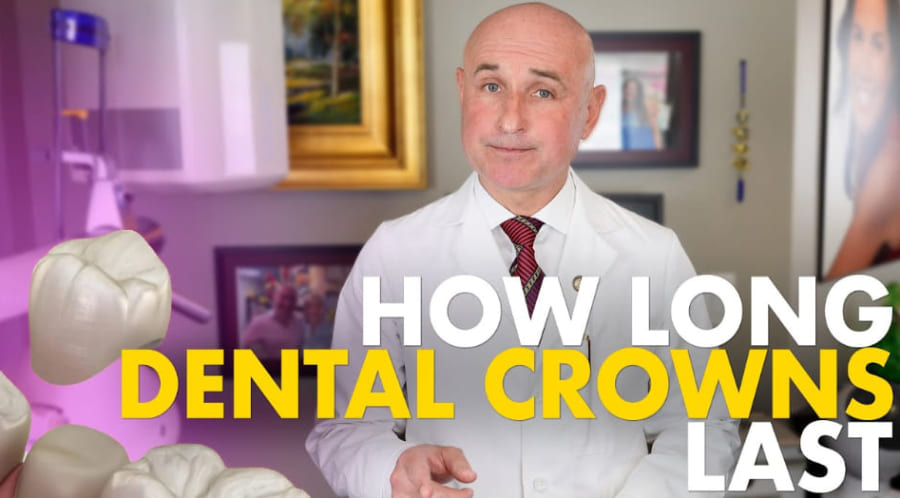- Should a tooth be black under a crown
- Why is there a black line under my tooth crown
- What if the tooth under a crown is black?
- Why does a dental crown fall out?
- What to do if your crown falls off and the tooth is black?
- How is a black tooth under a crown treated?
- How to prevent this from happening to you
- What if the crown looks Discolored?
- Intrinsic and extrinsic staining: why do teeth stain?
- From Pulpitis to Necrosis
- Worried About a Black Tooth Under a Crown? Here's What You Need to Know
Should a tooth be black under a crown
If you’ve ever heard someone say, “My crown fell off and my tooth is as black as Monday’s coffee,” that’s already a warning sign. A healthy tooth, even under a crown, should not be dark in color—a black tooth under a crown often points to decay or other serious dental issues. You might wonder, should the tooth under a crown be black? Absolutely not. Discoloration usually means something is wrong and it’s time to see your dentist.
Simply put, if the tooth under a crown is black, it is more than a cosmetic issue. It often signals that something serious is happening below the surface.
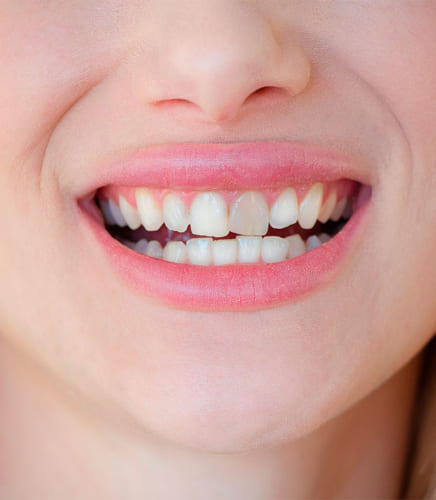
Why is there a black line under my tooth crown
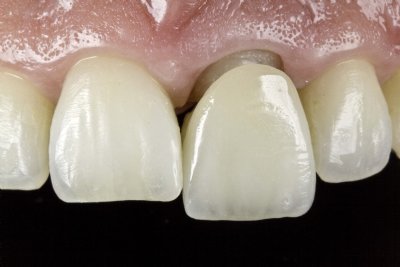
Bacterial infiltration
One of the most common causes is that the crown is poorly sealed, allowing bacteria to enter and do their thing. Imagine a house with leaks. If someone does not seal the roof well, water gets in. This causes damage inside the house.
This can lead to decay in the underlying tooth, weakening it and eventually causing it to blacken.
Old metal fillings
If you have an old filling, like silver or mercury amalgam, it might be oxidizing. This could be why you see that annoying black spot. I remember my grandmother had one like that, and she always said she was afraid to smile…. Imagine that!
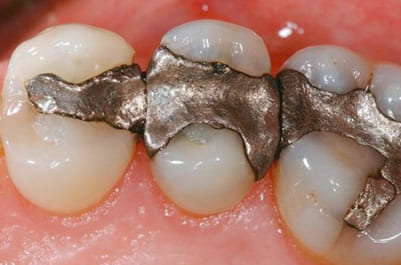
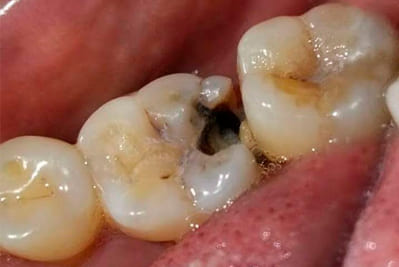
Tooth decay and deep damage
Tooth decay begins when oral bacteria destroy tooth enamel. If left untreated, the bacteria can damage the inner dentin layer and cause chaos if left untreated.
When the lesion is close to the pulp, it can cause toothache. Especially with hot or cold drinks. As the decay progresses, the toothache gets worse. When bacteria completely destroy the dentin, the nerves and blood vessels in the pulp can become damaged and discolored.
What if the tooth under a crown is black?
Blackening can be a symptom of pulp necrosis, which means that the inner tissues of the tooth have died. And no, that’s not an exaggeration. Think of a plant that no longer receives water: it dries out, changes color and dies. The same thing happens here.
This can lead to infection, bad breath, extreme sensitivity or even loss of the tooth.
And how can you tell? Sometimes it hurts, sometimes it doesn’t. But if you notice dark color, sensitivity or even bad odor, run to the dentist!
You might be wondering, what happens if the tooth under a crown is black and you’re not feeling any pain? Well, the absence of pain doesn’t mean the absence of a problem. Silent damage is still damage, and it can sneak up on you faster than you’d think.

Why does a dental crown fall out?
Poorly fitted crowns
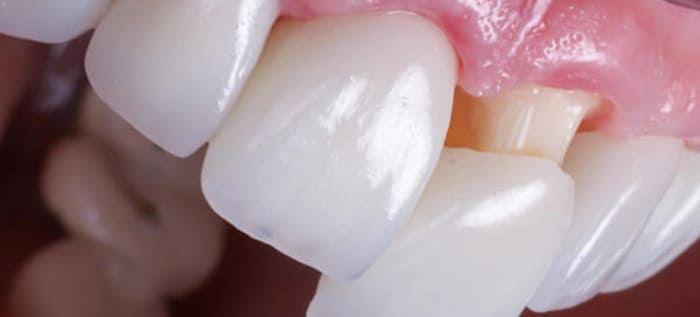
- If the crown doesn’t fit right from the start, it’s more likely to come loose. It’s like wearing shoes a size too big: they may seem to fit fine… until you trip.
- Bruxism, persistent teeth grinding, can put pressure on the crown and this causes loosening.
- If you clench your teeth while sleeping or under stress, you could be putting so much pressure on the crown that it ends up loosening. Have you ever woken up with jaw pain? It could be a clue.
- Decay under the crown can eat away at the tooth and leave it unsupported, making it easier for the crown to come off.
What to do if your crown falls off and the tooth is black?

- Act fast (but don’t panic!)
- Retrieve the crown if possible.
- Clean it gently and put it away.
- Avoid chewing on the affected side.
- Call your dentist as soon as possible.
- Temporary solutions: You can use dental cement from pharmacies to temporarily reattach a loose crown. This will hold it in place until you can see the dentist.
Can I still eat in the meantime?
Not ideally. Avoid eating or drinking on the affected side until you repair or replace it. This helps to avoid further damage to the exposed tooth, as it can make the damage worse.
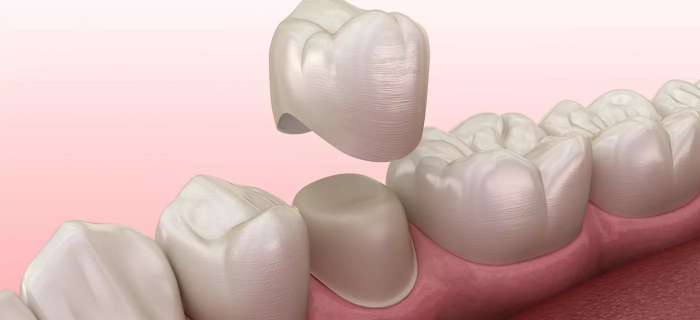
How is a black tooth under a crown treated?
Professional examination
First, the dentist should do a thorough examination to identify the exact cause. Not all discolourations mean the same thing.
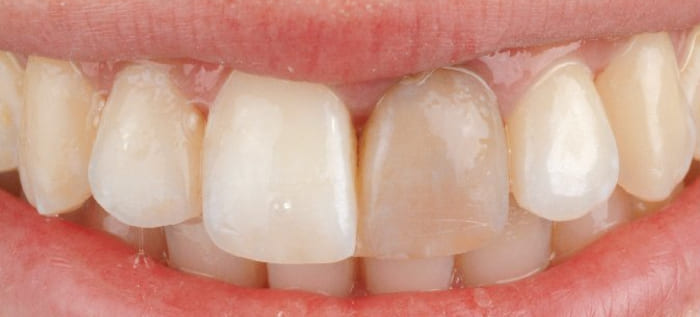
Possible Treatments
- Professional whitening, if it is only external or light stains.
- Tooth bonding, with tooth-colored resin.
- Porcelain veneers, to cover visibly damaged teeth.
- Root canal treatment, if there is necrosis or deep damage.
- Crown replacement, if it no longer fulfills its function.
How to prevent this from happening to you
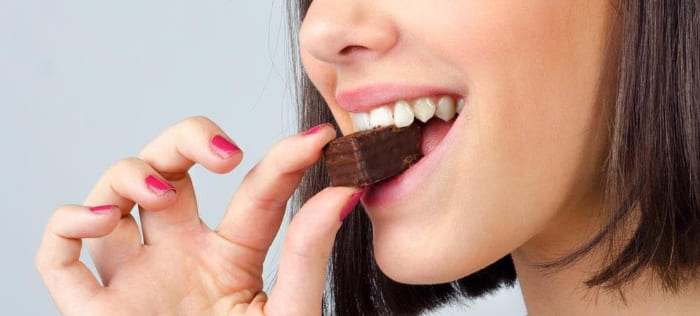
- Brush twice a day with dedication.
- Use dental floss between the crowns, especially after each meal, so that the remains cannot form plaque and deteriorate them.
- Avoid very sticky, crunchy or hard foods that can damage the crown, limit or abandon their consumption.
- Have dental checkups every six months.
- Use a night guard if you grind your teeth.
What if the crown looks Discolored?
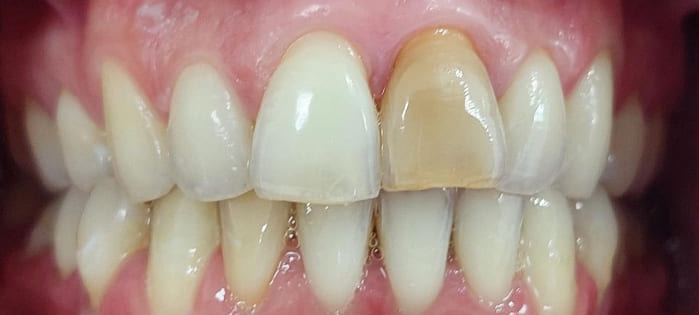
- Before taking any action, it is important to know what has caused the color change in the crown. This will allow someone to choose the most appropriate treatment.
- Specialists can only whiten discolored crowns by means of a specific dental treatment. This procedure exclusively serves dental crowns.
- Important: Do not use home bleaching products or whitening strips. They can damage the crown material and cause more stains.
- Be sure to follow the recommended cleaning procedures to avoid discoloration of the crown.
- Instead of pushing the particles with the brush, gently remove them. This will help keep the crown from slipping or loosening.
Intrinsic and extrinsic staining: why do teeth stain?
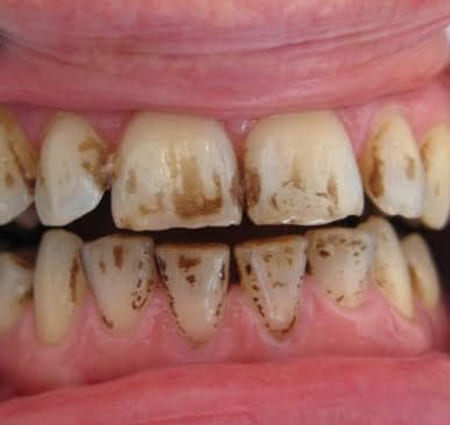
External (exogenous) tooth stains
Frequent ingestion of dark foods and beverages can cause visible stains on the surface of the teeth. We call these exogenous tooth stains, as they affect only the outer layer of the tooth.
Internal (endogenous) tooth stains
When dark substances penetrate beyond the surface and reach the inner layers of the tooth, endogenous stains occur.
These usually form during tooth development and are therefore more difficult to remove.
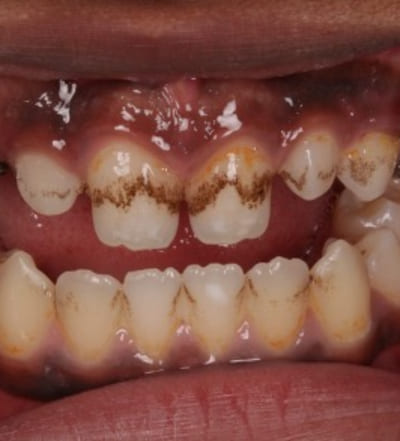
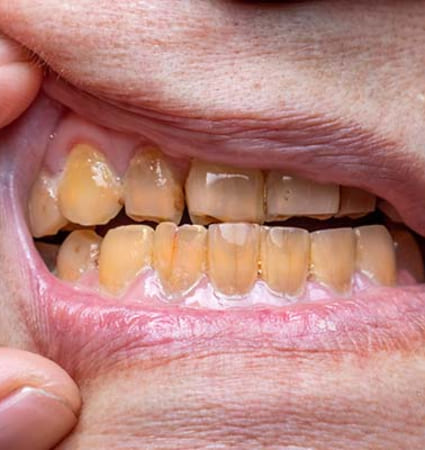
Common Causes of Intrinsic stains
One common cause is using certain antibiotics during childhood. Tetracycline is one of these antibiotics. It can cause permanent discoloration in developing teeth.
What happens to a tooth that has had root canal treatment?
After a root canal, it is normal for the tooth to appear darker over time. This occurs because, with the removal of the nerve and the blood from the inside, the tooth becomes “dead” and may change color.
In some cases, it needs treatment to improve its appearance (such as internal bleaching or a crown).
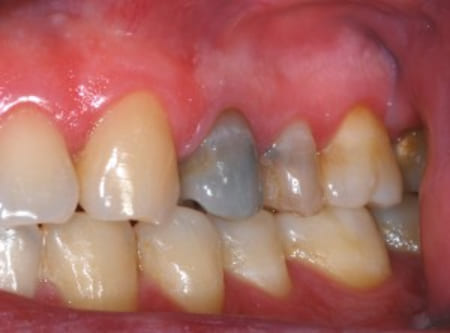
From Pulpitis to Necrosis
Inflammation of the pulp is called pulpitis. It is usually more sensitive to hot and cold foods and drinks. Pulpitis can occur due to caries or trauma that obstructs the blood supply.
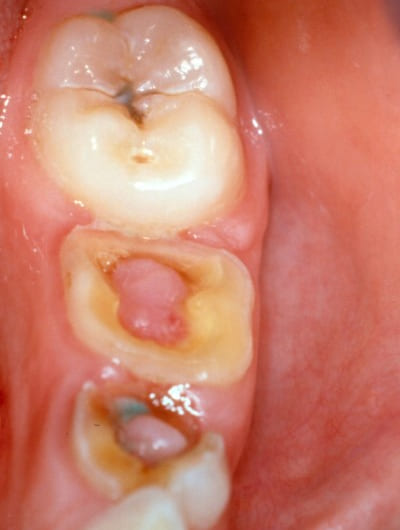
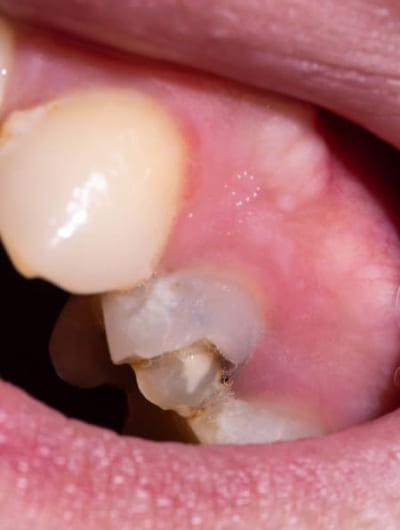
Pulp necrosis occurs when pulpitis progresses and the nerves and blood vessels of the tooth die. With pulp necrosis, the teeth lose the ability to sense heat and cold. The inside of the teeth may also turn black or brown due to loss of blood supply.
Worried About a Black Tooth Under a Crown? Here’s What You Need to Know
If you ever find yourself saying, “My crown fell off and my tooth is black!”, don’t let it go.
It’s your body warning you that something needs attention. Dental health is not just about aesthetics, it’s about overall wellness.
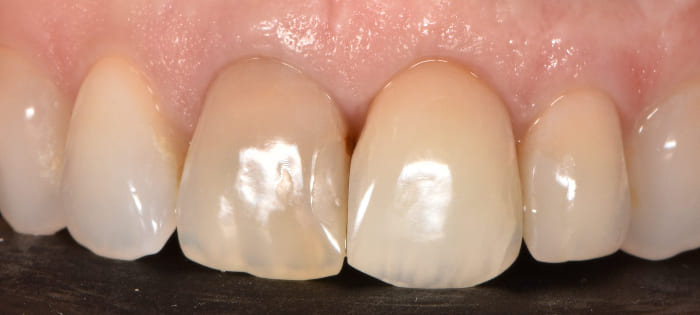
Here’s the bottom line: what happens if the tooth under a crown is black depends on the cause. In all cases, it needs professional attention. From hidden cavities to full-on pulp necrosis, the solutions vary, but the urgency doesn’t.
Have you ever gone through something like this? Have you ever ignored a small dental problem that turned into a big issue?
I once waited so long that I ended up needing a root canal? and it was only a minor annoyance at first!
Remember: a little pain can be the start of a big problem. And you, are you going to wait until it hurts to act?
“Stress and anger issues can lead to habits like bruxism, which can loosen a dental crown. Learn more about how to manage anger issues to prevent dental damage.”

